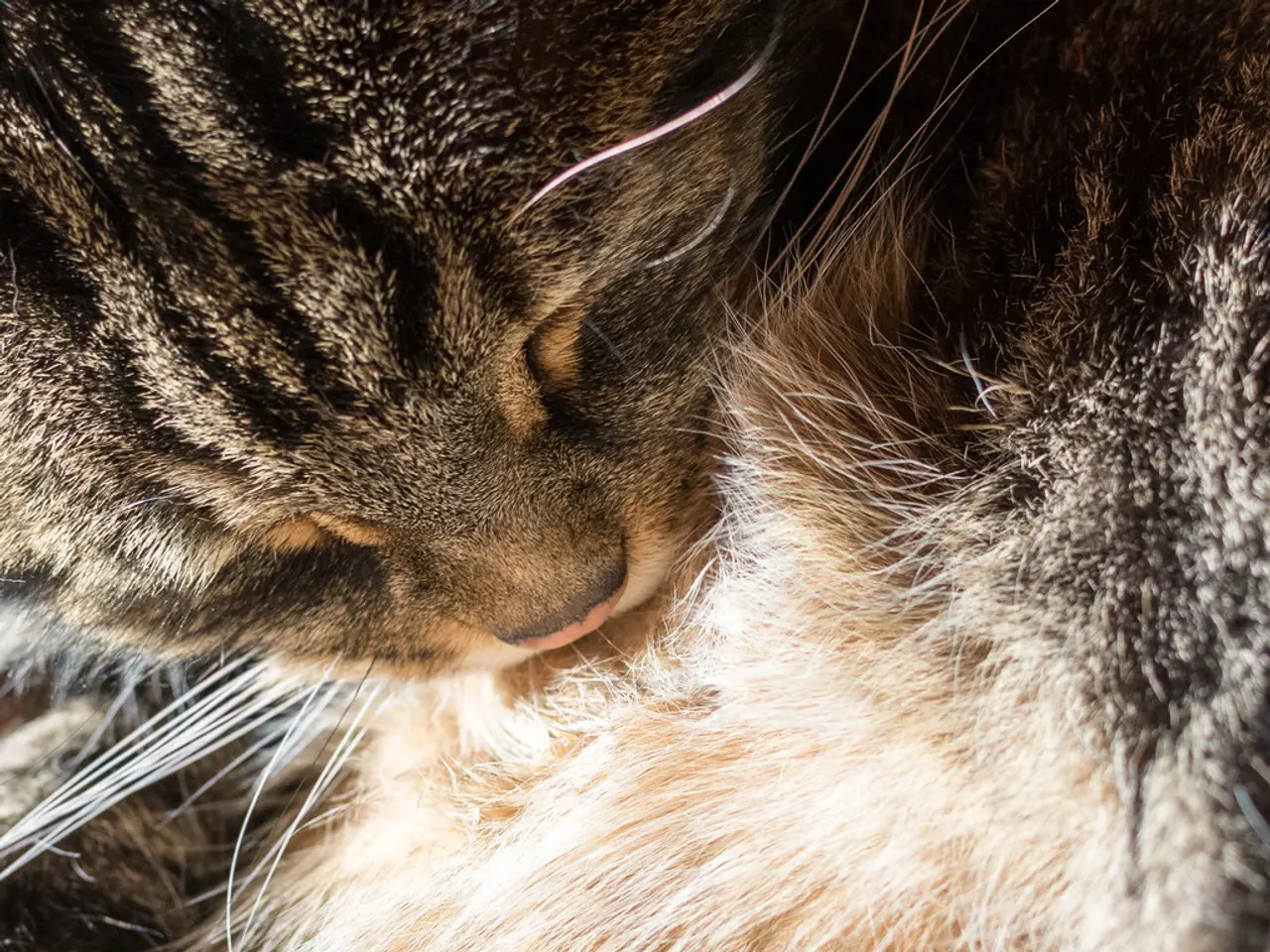Cat behavior expert unveils the hidden messages in your pet's physical cues
In the world of feline companionship, deciphering a cat's feelings and intentions can sometimes feel like a mystery. However, cats communicate through a rich repertoire of body language signals that, when understood, can help us better connect with our furry friends.
Cats use a combination of subtle and overt body signals to express emotions ranging from affection and curiosity to fear and aggression. One of the most telling signs is the position and movement of a cat's ears. When a cat’s ears are flared out to the sides or flattened back against the head, it signals they feel threatened or scared. Flattened ears warn that the cat might perceive a threat and could react defensively.
Posture is another crucial indicator. A cat facing head-on can mean readiness to pounce or a social greeting, depending on context. Crouching may indicate fear, pain, or readiness to spring into action, so context is crucial. A frozen posture usually signifies fear, as the cat hopes to avoid detection. An arched back with raised fur indicates fear or aggression.
Cats "speak" with their eyes through gaze direction, eyelid position, and pupil size. A fixed stare combined with a tense body can signal a threat, while slow blinking is a sign of trust and affection. Dilated pupils show heightened emotional arousal such as fear, excitement, or aggression.
Tail position and movement carry important messages. A high-held tail generally indicates confidence and friendliness, while a thwacking tail can signal irritation or agitation. Tail flicking can be a sign of overstimulation, anxiety, or uncertainty, especially if it's low or quick.
Other gestures include rolling over to show the belly, a trust gesture, though not necessarily an invitation for petting. Slow blinking at a human is like a “feline hug” indicating comfort and affection. Purring usually suggests contentment but can also indicate that a cat is soothing itself when uncomfortable. Hissing and growling communicate anger and readiness to defend themselves.
Tucking paws and tail can indicate that a cat is feeling relaxed, but it can also mean that they are overwhelmed and shutting down emotionally. Exposing their belly means that a cat feels safe and trusts the person they are with, as exposing their stomach makes them vulnerable.
By observing these elements in context, humans can better understand and respond to their feline companions’ feelings and needs. Understanding a cat's body language can help meet their needs, ensure their happiness, and provide peace of mind for the owner.
Recently, certified cat behaviorist Saba Sayyed has explained key body language indicators in a new post, providing valuable insights for cat owners. Giving a kitty space and letting them unwind can help when tail flicking is observed. Slow blinking in cats is a sign of trust and emotional connection between the cat and the owner. Slowly blinking back at a cat is the feline equivalent of saying 'I love you'.
In conclusion, taking the time to learn and understand a cat's body language can greatly enhance the bond between humans and their feline friends, leading to a more harmonious and fulfilling relationship.
- Understanding a cat's body language, such as flattened ears signifying threat and slow blinking indicating trust, can help us better connect with our feline friends.
- A cat's tail position also communicates its emotions; a high-held tail generally indicates confidence and friendliness, while tail flicking can signal anxiety or uncertainty.
- In the home-and-garden section of a pet magazine, certified cat behaviorist Saba Sayyed explained that giving a kitty space and letting them unwind is crucial when observing tail flicking.
- By responding appropriately to our cat's behavior and lifestyle, we can meet their needs, ensure their health, and cultivate a stronger bond that brings peace of mind to both pet and owner.




